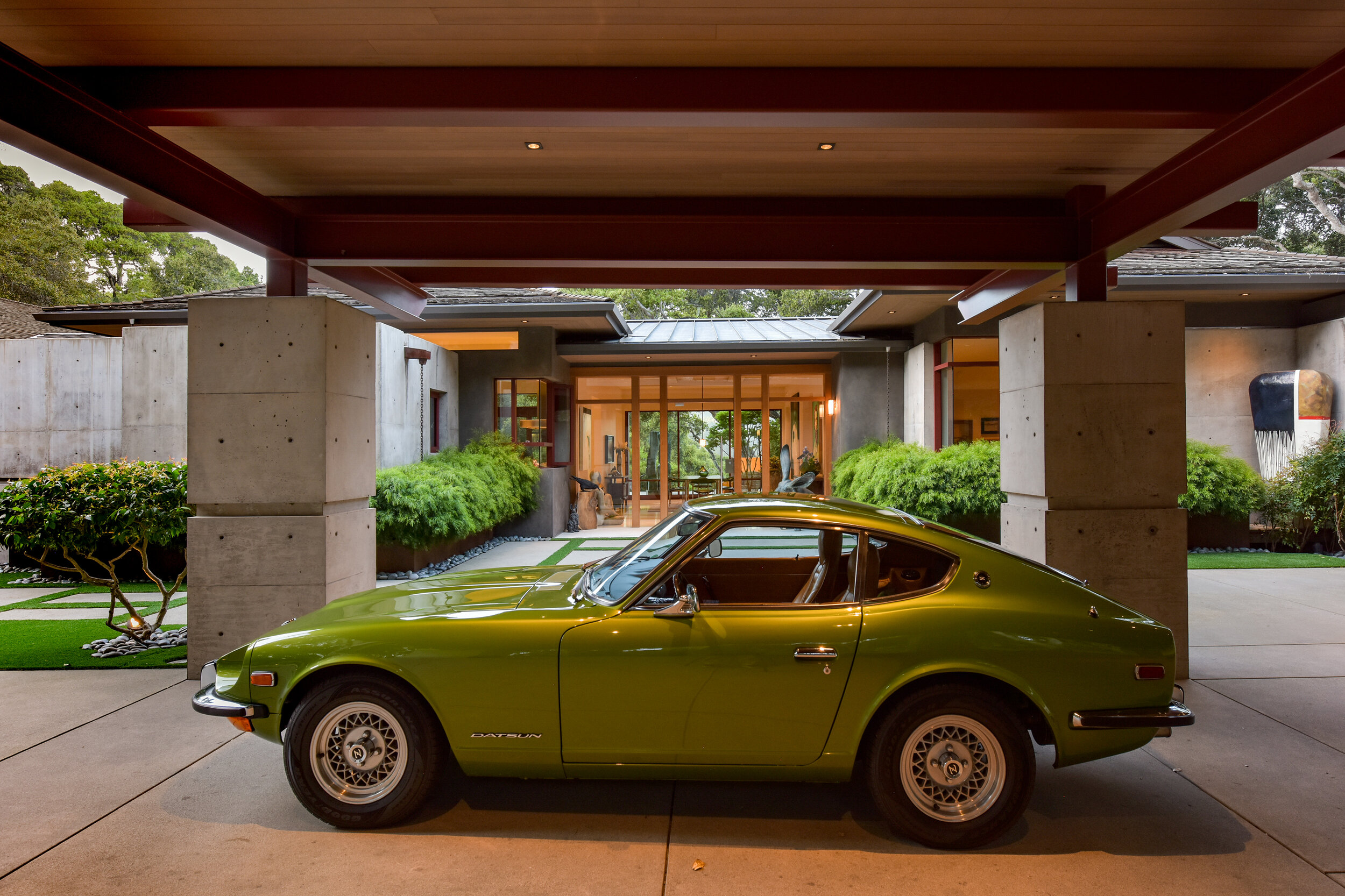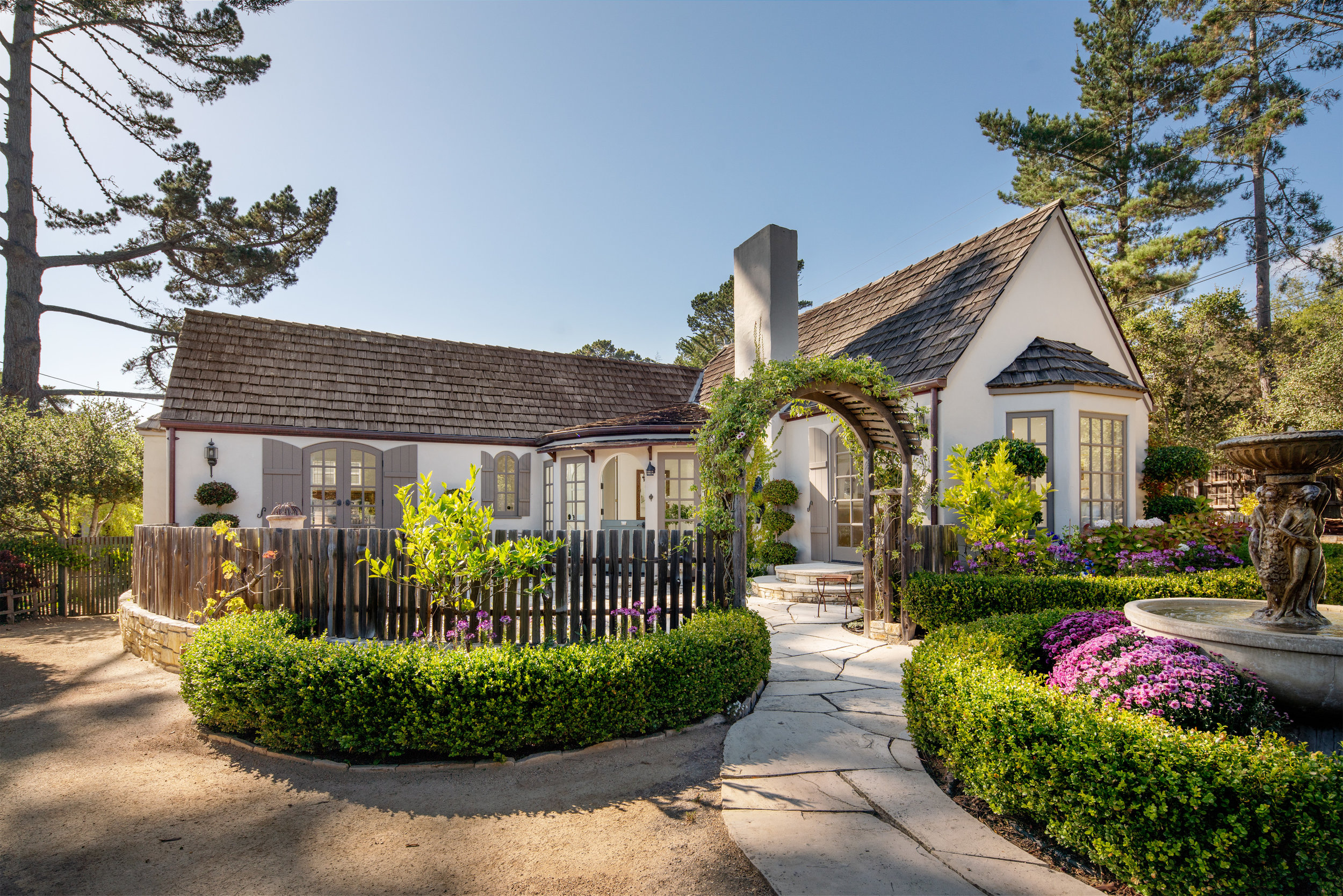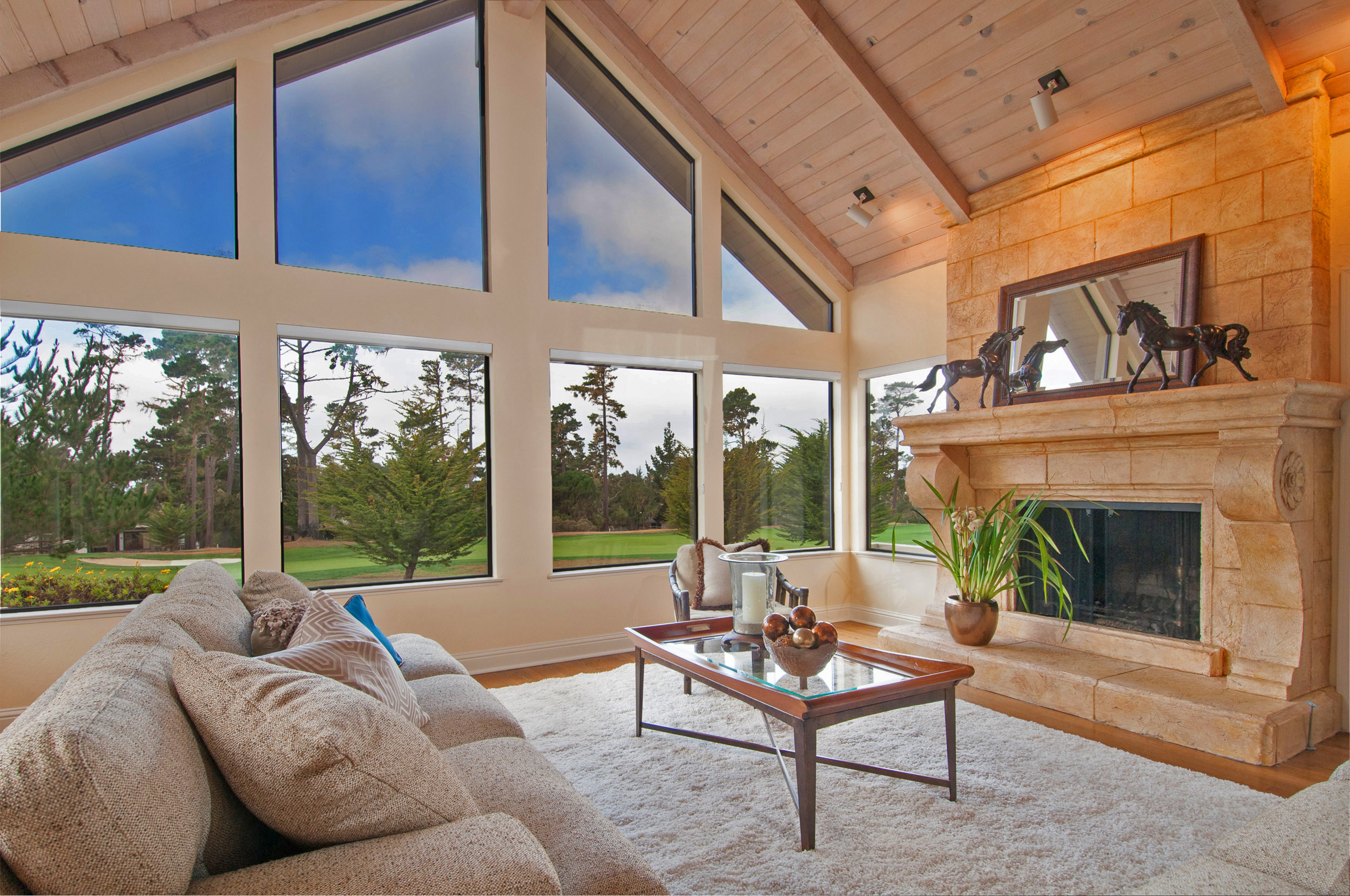Selling dreams — and communities you’ll want to call home
Realtors Kathleen Randazzo and Kate Gladney have worked as a team for more than a decade. They laugh a lot, but they take selling homes seriously, and their longtime friendship benefits their clients, too
THEY MAKE their jobs look like so much fun. When Sotheby’s realtors Kate Gladney and Kathleen Randazzo talk about work, their smiles go all the way up to their eyes, and a hearty laugh isn’t far away. It’s hard to believe they’re discussing work that involves millions of dollars in real estate deals annually, with all of the accompanying stress. Randazzo, who hails from Texas, acquired some of her grace under pressure at the Rio Grill, where she worked for 20 years as a server and bartender, beginning shortly after she came to the Monterey Peninsula, along with her sister, who live in Pacific Grove.
Gladney’s backstory began in Michigan, where she earned a master’s degree in theater arts. Stagecraft, she discovered much later, translated well to staging and presenting houses. She also worked as a theater and English teacher in her home state. In another of her careers, she was a serial entrepreneur, and had a successful stint working in Silicon Valley. Randazzo left the Rio Grill and opened her own business, Leave it to Me, a concierge service for people with second homes here. She’d stock refrigerators, clean and freshen the houses and make sure everything was ready when the owners arrived to enjoy a few days, weeks, or months by the sea.
It taught Randazzo a lot about marketing, but she ended she figured out a way to squeeze herself through another window that was also unsecured. The open house went on without anyone knowing how close it had come to being a real stinker of a day.
Randazzo had a similar experience after driving to Oak Hills (along Route 156 between highways 1 and 101) to see a home. When she got there — it's about a 40-minute drive, depending on traffic — there was no key in the lock-box. A phone call confirmed that she could get one the next day, but she didn't want to make a second trip. She spotted a dog door and just shimmied inside.
Working and waiting
For all the fun and laughter, though, selling real estate is hard work, something would-be agents often underesti-mate. "It's a real job with real hours. We put a lot of time in our office and going to events," said Gladney.
"You have to be motivated and tenacious,'" agreed Randazzo. "We couldn't wait for business to come to us."
They said establishing initial word-of-mouth publicity for themselves took about three years. "But we never had a sense we weren't going to make it," said Gladney.
Randazzo and Gladney are serious about supporting their clients and providing them with reliable, trustworthy service. "It's a big responsibility — this is people selling their biggest asset," Gladney said. From setting the right price to making sure a seller accepts the best offer, it's all about details.
Technology has simultaneously made their jobs easier and more difficult. "Look at e-signatures," said Randazzo, referring to the ease with which documents can be completed without having to fax, mail or deliver them.
They were also early adopters of the online sales video. When they represented a 1924 Spanish colonial in Pebble Beach with a secret passage hidden behind a bookshelf, the realtors came up with a simple love story acted out to music –no dialogue– in which characters in period costumes left little notes for each other in various rooms, all while highlighting the home's features.
Online presentation is convenient, but requires a lot of attention to detail. "You better do a really good job and make sure the house stands out," said Gladney.
Realtors Kathleen Randazzo and Kate Gladney have built their careers so that they have the coveted “work-life balance,” letting them each spend time relaxing with friends and family.
They worry that prospective buyers believe they know everything about a property from a website, however, and the agents are extremely reluctant to sell a home to anyone who hasn’t seen it in person. “They could think it smells funny, the stairs are too steep, the dog next door barks and they don’t want that,” Randazzo said. The highest offer isn’t always the best one, either.
“You have to vet the offer. Do they have the money to back it up?” She also said that some buyers can tie up the property for long periods and then back out — they try to spot them, too.
It still comes down to people and relationships. “When you move somewhere, it’s important to have a sense of community,” said Randazzo. “We’re bringing people into our community. We like being with them and seeing what they’ve done” in their lives.

























